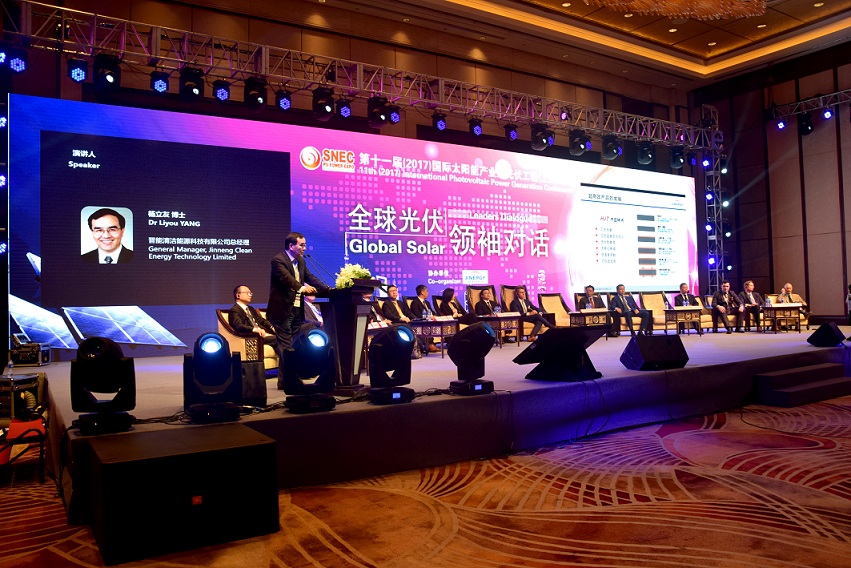Product and Service
Power Generation of JINERGY HJT Modules Increased by 44%
On April 18th, Global Solar Leaders Dialogue, a significant event during SNEC 2017 was convened grandly in Shanghai. PhD YANG Liyou, General Manager of JINERGY, the leading PV modules manufacturer of Shanxi Province, delivered a keynote address themed by “LCOE Drives Continuous Industrialization Technology Progress” and attended the gloabl solar leaders dialogue themed by “Global Market Trends”.

“At present, all links of the global PV industry chain are still faced with the issue of excessive low-end production capacity, but the high-efficiency and ultra high-efficiency production capacity is still rare. Meanwhile, in face of tightening policies and increasing cost of land resources, there is an increasing demand for high-efficiency products”, said YANG Liyou.
In order to soften the impact of expanding demand for high-efficiency PV products, JINERGY has been committed to boosting the efficiency of polycrystalline products over the past three years to further reduce manufacturing cost. As revealed by YANG Liyou, the output proportion of JINERGY’s 275W and 270W modules accounted for 50% respectively in the first quarter this year, and it was expected that the mass production of 280W modules would be achieved in the third quarter. “With the wide application of diamond wire technology, the cost of polycrystalline products will further decrease by 5% to 8%, so the polycrystalline technology remains the mainstream”, he highlighted.
While the high-efficiency polycrystalline production capacity reached a good result, JINERGY also made a breakthrough in HJT mass production technology this year. It was introduced that by adopting the heterojunction bifacial cells with conversion efficiency over 23%, HJT modules were featured by excellent performance in weak light, leading temperature coefficient of -0.28%/℃, and ultra-low degradation with N-type silicon wafer. Moreover, power generation of JINERGY’S HJT module is increased by 8%-20% in different application because of bifacial cell structure design. Compared with regular high-efficiency modules, power generated in 25 years could be increased by 20%, and power generation per unit area could be increased by more than 40%.
“So far, the mass production cost of HJT is 0.7 USD/W. Our goal is to reduce the mass production cost of HJT modules to under 0.4 USD/W within three years”, YANG Liyou expressed.

